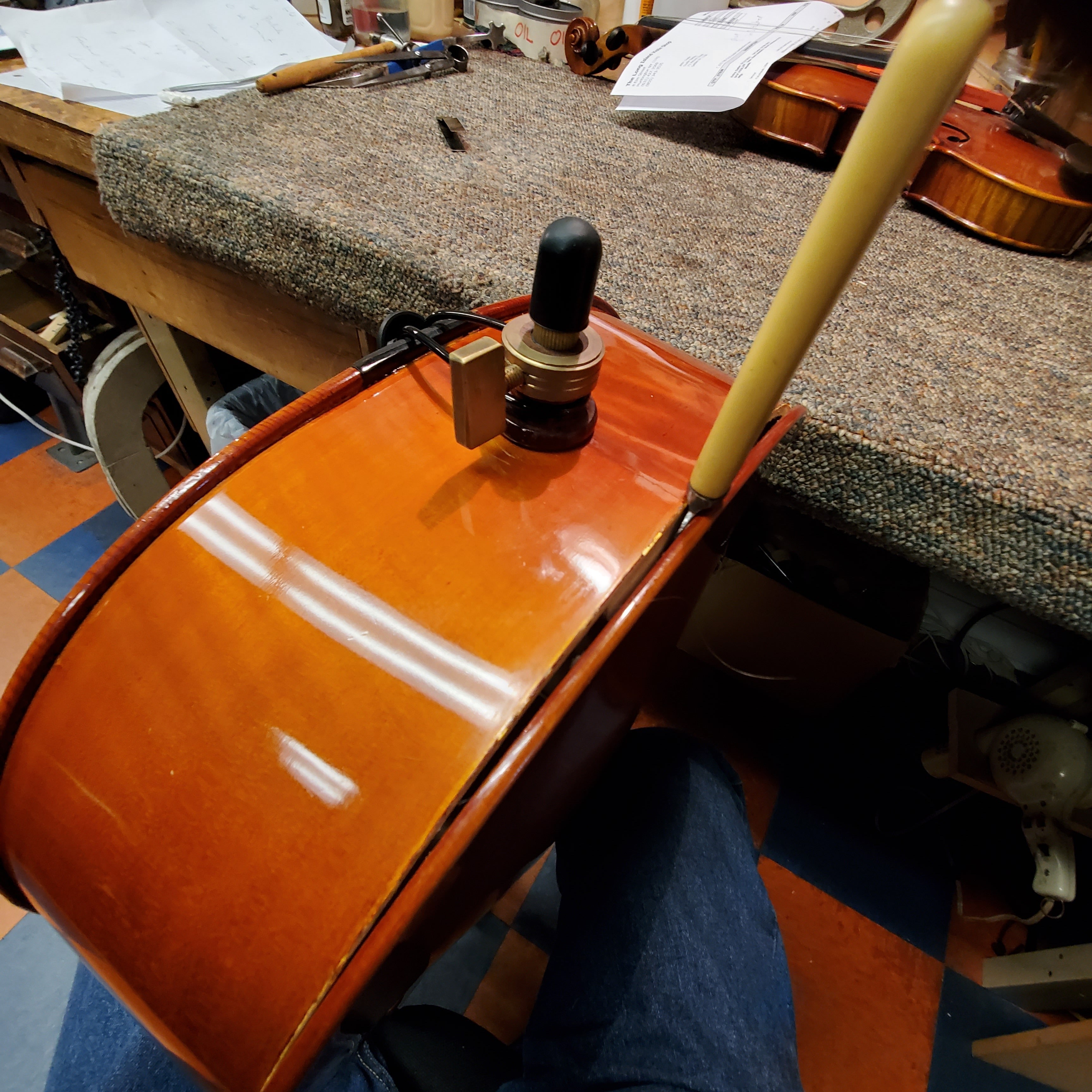As the weather gets colder and heaters start to come on, wooden instruments become vulnerable to dryness-related damage. Wood expands and contracts with the fluctuation between humid and dry conditions. This is why string players will notice their pegs starting to slip as the weather gets colder and their instruments become more difficult to keep in tune. When winding your pegs back into place, do it carefully and wind towards the head of the peg. This will help hold the peg by exerting tension which pulls the peg further into the peg box, as well as acting like a friction brake.

Around this time of year we start seeing more customers coming into the shop with open seams and dryness cracks. Open seams are not necessarily a bad thing. In fact, it’s better to have an open seam, which can be easily fixed, as opposed to a dryness crack, which can be an expensive repair.
Unfortunately, insurance does not cover “weather damage” such as dryness cracks. That’s why it’s important to be mindful of these temperature changes and to make sure that your instrument is protected against them. Gradual adjustment to temperature change is the key to keeping your instrument in good condition.

Sometimes a joint in the instrument will fail which can severely weaken the structure of the instrument and lead to more serious damage:
- The fingerboards will pop off
- The neck will come loose from the top block or the bottom button
- The joints between the top and bottom block and the top or back will fail (see photo on right).

If your skin is starting to feel dry, then chances are your instrument feels dry as well. At the LIVS we have our room humidifier running constantly until the cold weather dies down. The best source we have found for room humidifiers and supplies is IALLERGY.com, and the bigger the humidifier you can get, the better.
We realize that room humidifiers may not be an option for many people, especially students who are away at school, so keeping your instrument inside your case when you aren't practicing is always a good idea. Your instrument’s case is its first line of defense against damage of any kind. The padding on the inside of a case helps slow temperature and humidity changes, giving your instrument more time to gradually adjust to temperature changes.
In addition to keeping your instrument in its case, we highly recommended using a case humidifier, such as the Boveda 2-Way Humidification System. Each Boveda packet contains a solution of pure water and natural salts, which respond to the environment inside your case by eliminating excess moisture while maintaining constant relative humidity. Between 30% and 60% humidity is ideal, and the Boveda maintains relative humidity between 45% and 55%, which is perfect! We don’t recommend using rubber hoses or Dampits because they can damage the F holes of an instrument if they contain too much moisture.
A digital hygrometer or thermometer which measures the humidity level inside your case is also a great tool to own. We sell Bovedas and digital hygrometers at The LIVS.
Click here to read our pamphlet: The Musician's Guide to Instrument Care.





Leave a comment